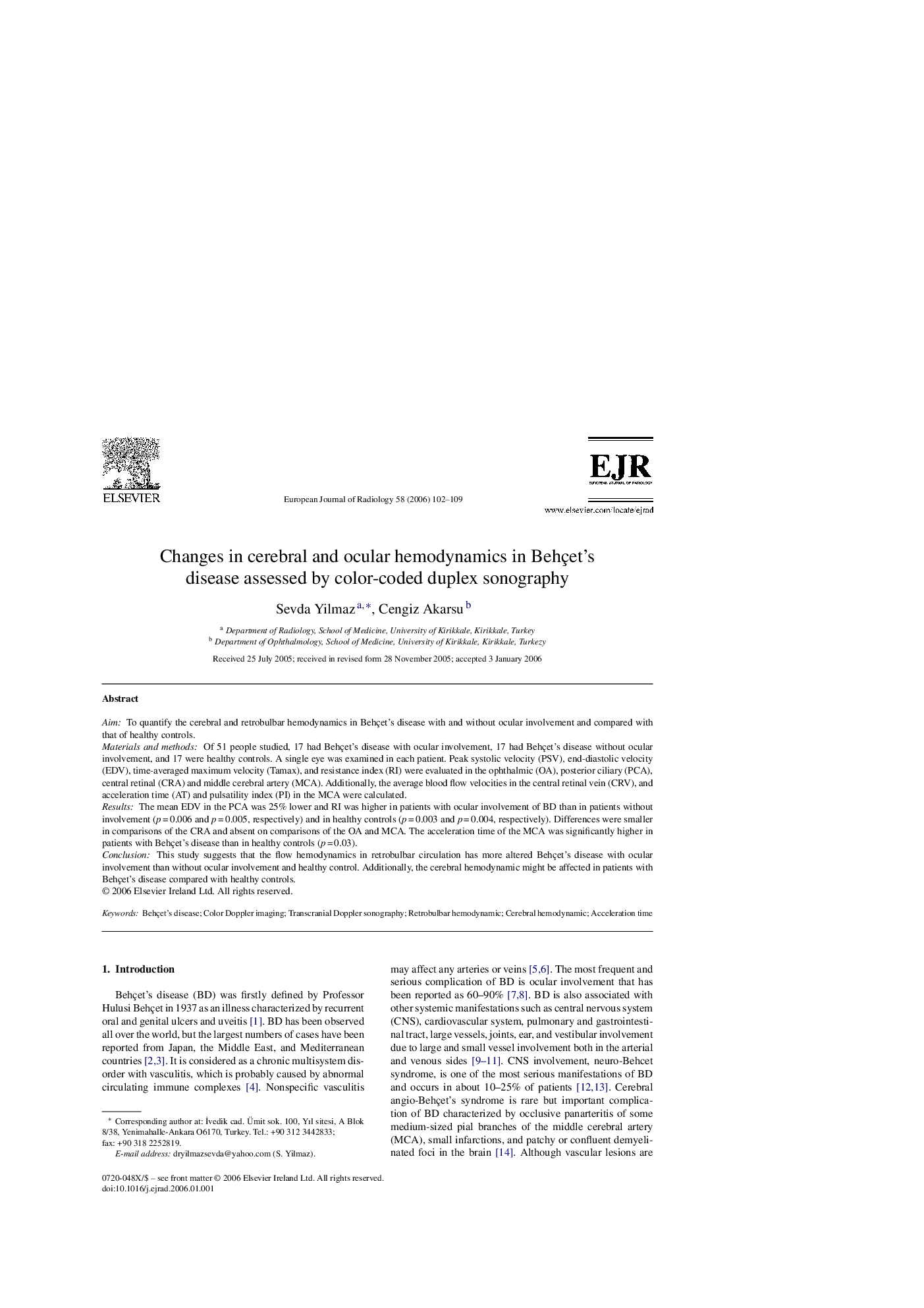| Article ID | Journal | Published Year | Pages | File Type |
|---|---|---|---|---|
| 4228650 | European Journal of Radiology | 2006 | 8 Pages |
AimTo quantify the cerebral and retrobulbar hemodynamics in Behçet's disease with and without ocular involvement and compared with that of healthy controls.Materials and methodsOf 51 people studied, 17 had Behçet's disease with ocular involvement, 17 had Behçet's disease without ocular involvement, and 17 were healthy controls. A single eye was examined in each patient. Peak systolic velocity (PSV), end-diastolic velocity (EDV), time-averaged maximum velocity (Tamax), and resistance index (RI) were evaluated in the ophthalmic (OA), posterior ciliary (PCA), central retinal (CRA) and middle cerebral artery (MCA). Additionally, the average blood flow velocities in the central retinal vein (CRV), and acceleration time (AT) and pulsatility index (PI) in the MCA were calculated.ResultsThe mean EDV in the PCA was 25% lower and RI was higher in patients with ocular involvement of BD than in patients without involvement (p = 0.006 and p = 0.005, respectively) and in healthy controls (p = 0.003 and p = 0.004, respectively). Differences were smaller in comparisons of the CRA and absent on comparisons of the OA and MCA. The acceleration time of the MCA was significantly higher in patients with Behçet's disease than in healthy controls (p = 0.03).ConclusionThis study suggests that the flow hemodynamics in retrobulbar circulation has more altered Behçet's disease with ocular involvement than without ocular involvement and healthy control. Additionally, the cerebral hemodynamic might be affected in patients with Behçet's disease compared with healthy controls.
